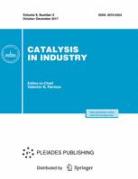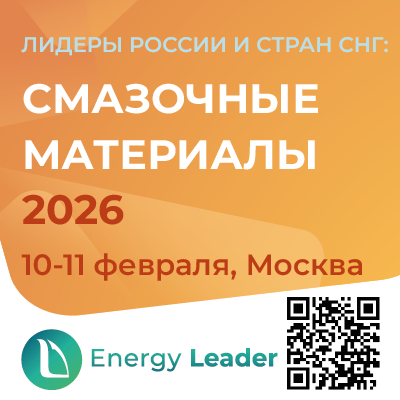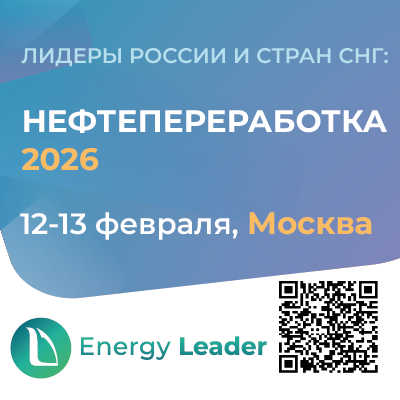Investigation of the Process of Catalytic Steam Cracking of Heavy Oil in the Presence of Disperse Catalysts. Part 2. Studies of the Influence Concentration of the Ni-Containing Catalyst on the Product Yield and Properties
https://doi.org/10.18412/1816-0387-2016-4-42-50
Abstract
The process of steam cracking of heavy oil (HO) was studied under static conditions at 425 °C in the presence of a nanodisperse Ni-containing catalyst (0,3–2,0 wt.% of Ni). This catalyst was established to promote upgrading of the semi synthetic oil produced from HO: the H : O ratio increases (against noncatalytic steam cracking) but the sulfur content and viscosity decreases. An increase in the catalyst loading results only in a minor increase in the H : O ration, while the yield of the liquid products decreases from 81 to 76 % at an increase in the yield of coke and gas products (from 8 to 13 and from 2 to 4 wt.%, respectively). X-ray phase analysis and transmission electron spectroscopic techniques were used for characterization of the catalyst-containing coke residue. The formation of Ni9S8 nanoparticles (15–40 nm in size) from the catalyst precursor (Ni(NO3)2·6H2O) under the process conditions was shown. To improve efficiency of the upgrading process needs further choice and studies of catalytic systems for cracking of heavy oil feedstock in the presence of overheated steam and optimization of the process conditions.
About the Authors
P. M. EletskiRussian Federation
O. O. Mironenko
Russian Federation
G. A. Sosnin
Russian Federation
O. A. Bulavchenko
Russian Federation
O. A. Stonkus
Russian Federation
V. A. Yakovlev
Russian Federation
References
1. BP energy outlook 2016 (summary tables) http://www.bp.com/content/dam/bp/excel/energy-economics/energy-outlook-2016/bp-energy-outlook-2016-summary-tables.xlsx (Accessed 05 April. 2016).
2. Alboudwarej H., Felix J., Taylor S. et al // Oilfield Review (Schlumberger). 2006. Summer. P. 34-53.
3. World Energy Council 2013: World energy resources. A summary https://www.worldenergy.org (Accessed 05 April. 2016). Used by permission of the World Energy Council.
4. World Oil Outlook 2015: Organization of the Petroleum Exporting Countries OPEC Secretariat, October 2015. www.opec.org/opec_web/static_files_project/media/downloads/publications/WOO%202015.pdf http://www.opec.org/opec_web/static_files_project/media/downloads/publications/WOO 2015.pdf (Accessed 05 April. 2016).
5. Суханов А.А., Петрова Ю.Э. // Нефтегазовая геология. Теория и практика. 2008. № 3. С. 1–11.
6. Pat. Appl. US 20130015100, 2013.
7. Hasan S.W., Ghannam M.T., Esmail N. // Fuel. 2010. V. 89. P. 1095–1100.
8. Doust A.M., Rahimi M., Feyzi M. // Chemical Engineering and Processing. 2015. V. 95. P. 353–361.
9. Castaneda L.C., Munoz J.A.D., Ancheyta J. // Catalysis Today. 2014. V. 220–222. P. 248–273.
10. Machin I., Jesus J.C., Rivas G., Higuerey I., Cordova J., Pereira P., Ruette F., Sierraalta A. // Journal of Molecular Catalysis A: Chemical. 2005. V. 227. P. 22 –229.
11. Fumoto Е., Tago Т., Tsuji Т., Masuda Т. // Energy & Fuels. 2004. V. 18. P. 1770 – 1774.
12. Fumoto Е., Tago Т., Masuda Т. // Energy & Fuels. 2006. V. 20. No. 1. P. 1–6.
13. Rohallah H., Nassar N.N., Pereira P. // Energy & Fuels. 2013. V. 27. I. 4. P. 2194–2201.
14. Pat. US 5688395.1997.
15. Sharypov, V.I., Kuznetsov, B.N., Beregovtsova, N.G. // Fuel. 1996. V. 75. № 7. P. 791–794.
16. Хаджиев С.Н., Кадиев Х.М., Кадиева М.Х. // Нефтехимия. 2014. Т. 54. № 5. С. 327–351.
17. Angeles M.J., Leyva C., Ancheyta J., Ramírez S. // Catalysis Today. 2014. V. 220–222. P. 274– 294.
18. Лом У.Л., Уильямс А.Ф. Заменители природного газа. Производство и свойства. / Пер. с англ., под. ред. Н.А. Федорова. М.: Недра, 1979. С. 247.
19. Висалиев М.Я., Шпирт М.Я., Кадиев Х.М., Дворкин В.И., Магoмадов Э.Э., Хаджиев С.Н.. // Химия твердого топлива. 2012. № 2. С. 32–39.
20. Кадиева М.Х. Формирование и свойства системы «наночастицы катализатора – углеводородная среда» для гидроконверсии высокомолекулярных компонентов нефтей / Дис. … канд. хим. наук. М.: ИНХС РАН, 2011. C. 175.
21. Lv G., Wang F., Cai W., Zhang X. // Colloids and Surfaces A: Physicochemical and Engineering Aspects. 2014. V. 447. I. 5. P. 8–13.
22. Рябов В.Д. Химия нефти и газа: учебное пособие / 2-е изд., испр. и доп. М.: Форум; ИНФРА-М, 2014. 336 с.
Review
For citations:
Eletski P.M., Mironenko O.O., Sosnin G.A., Bulavchenko O.A., Stonkus O.A., Yakovlev V.A. Investigation of the Process of Catalytic Steam Cracking of Heavy Oil in the Presence of Disperse Catalysts. Part 2. Studies of the Influence Concentration of the Ni-Containing Catalyst on the Product Yield and Properties. Kataliz v promyshlennosti. 2016;16(4):42-50. (In Russ.) https://doi.org/10.18412/1816-0387-2016-4-42-50



























